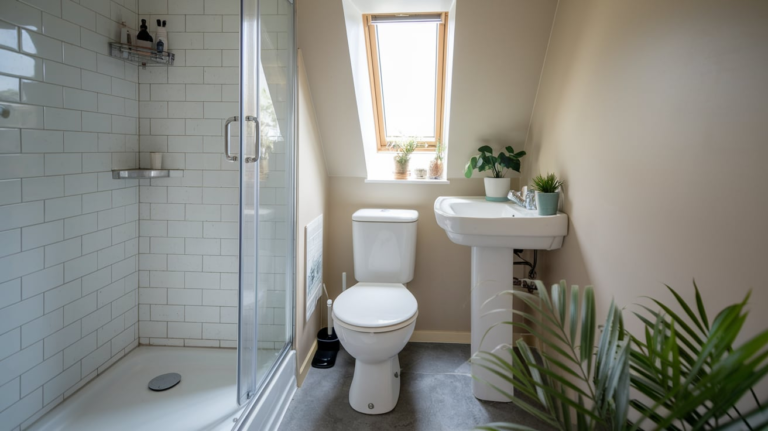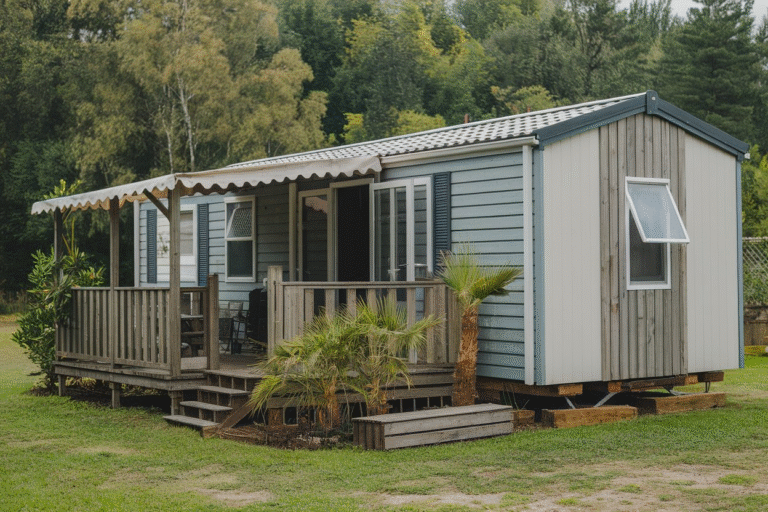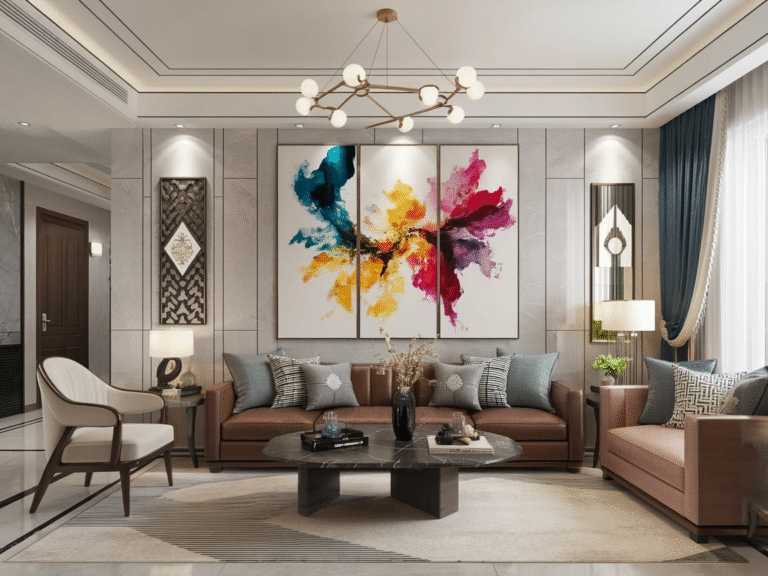20 Colonial House Exterior Ideas
Colonial homes are like timeless stories passed down through generations—classic, elegant, and full of quiet strength. If you’re lucky enough to own one, you know it’s not just a house; it’s a proud piece of history.
But even history needs a little polishing now and then. Whether you’re restoring an old gem or refreshing your current look, this guide is packed with 20 Colonial house exterior ideas that are as practical as they are charming.
1. Embrace Classic White with Contrasting Shutters
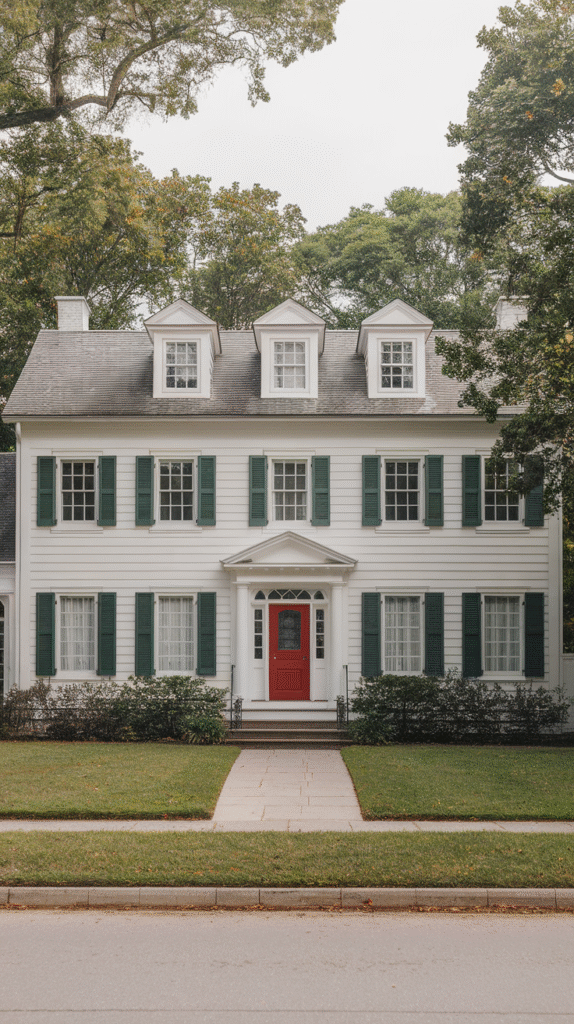
Nothing says “Colonial” quite like a crisp white façade paired with bold, black or dark green shutters. It’s the architectural equivalent of a tuxedo—clean, classic, and endlessly elegant. This combo enhances symmetry and allows those charming windows to shine. My neighbor across the street did this, and now her home looks like it belongs in a coffee table book.
2. Add a Centered Front Door with Side Lights
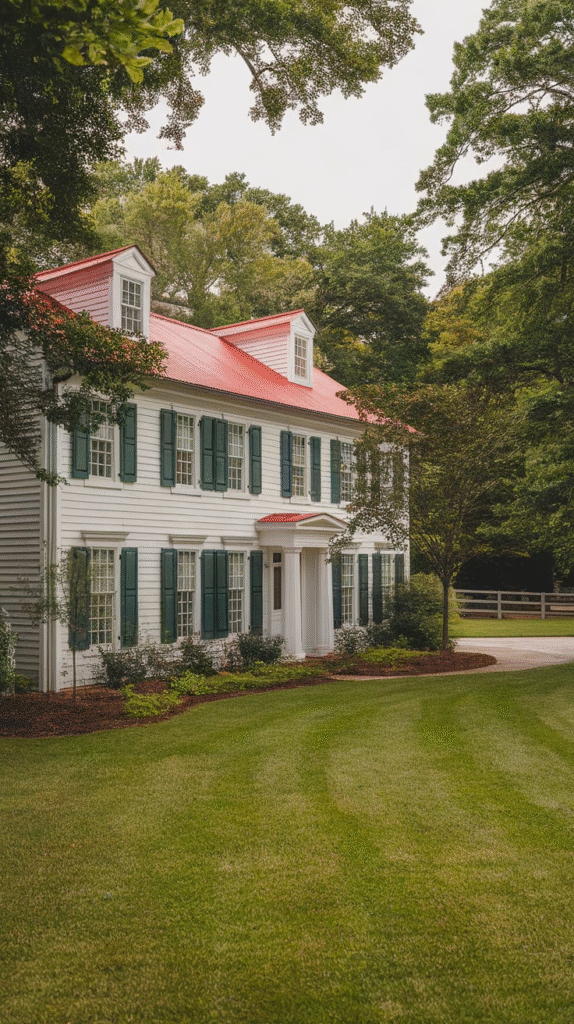
Colonial homes are famous for their symmetrical design, and the front door is their heartbeat. A centered front door with sidelights or fluted columns on either side adds a warm, balanced welcome. Bonus tip? A pop of color—think deep red or navy—on the door adds personality without betraying tradition.
3. Install Brick or Stone Pathways
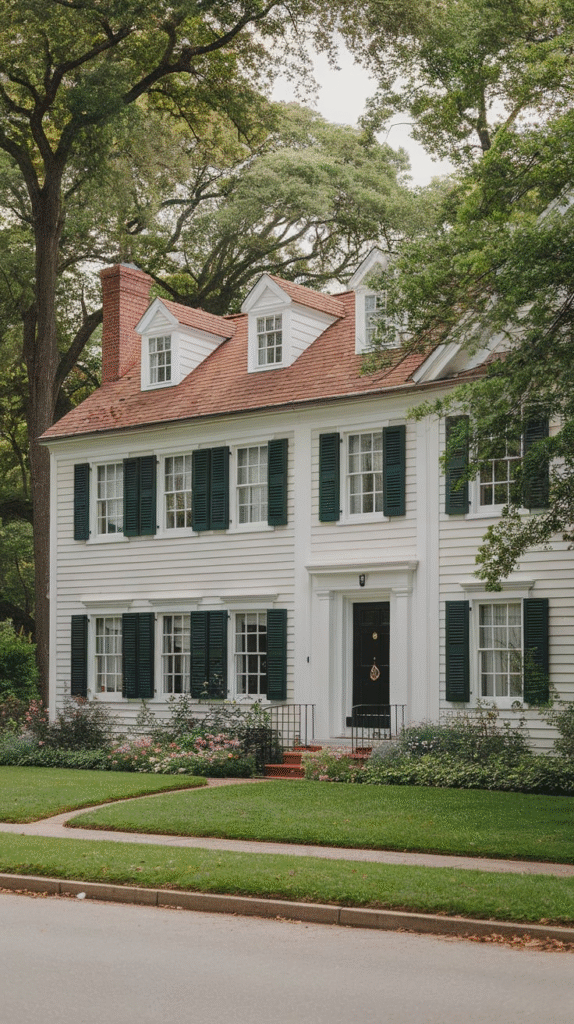
Picture this: A winding, brick path leading to your stoop, crunching softly under your shoes like autumn leaves. A well-crafted path grounds the home and sets a refined tone. Brick is warm and historical, while bluestone or cobblestone adds a touch of rustic class. Either way, it’s like giving your Colonial a red carpet.
4. Update the Siding (But Keep It Classic)
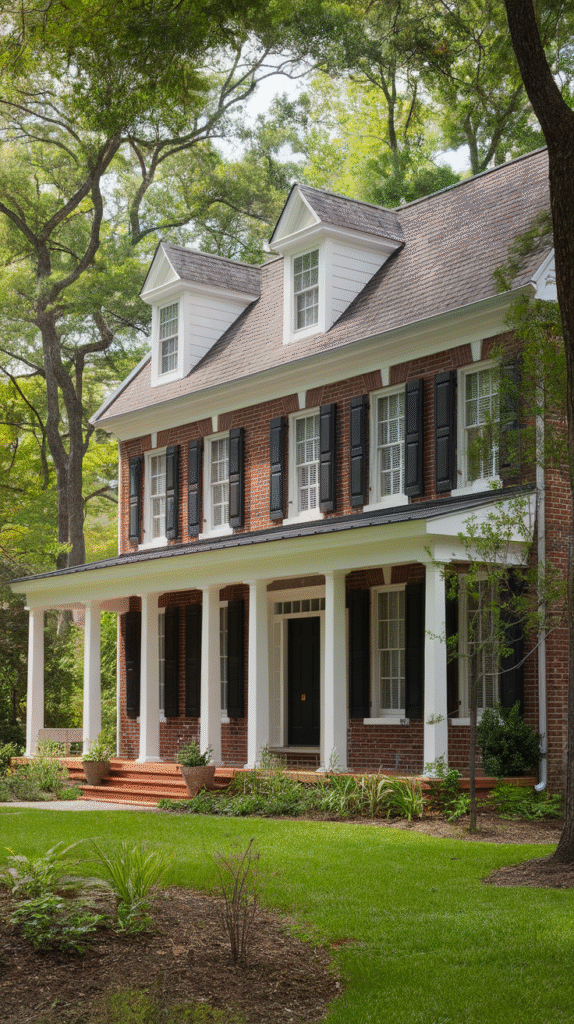
You don’t have to change everything to make a statement. Updating the wooden clapboard or fiber cement siding while staying true to the Colonial aesthetic is like giving your home a tailored suit. Keep the horizontal lap style, and choose neutral tones like taupe, beige, or soft gray for authenticity with longevity.
5. Install Classic Six-Over-Six Windows
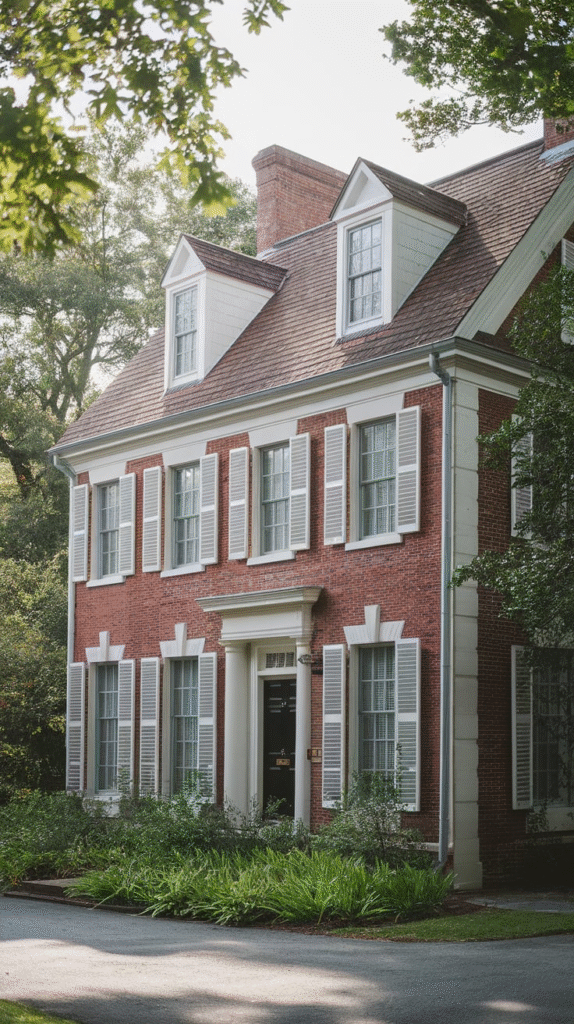
Colonial architecture is all about details, and six-over-six or nine-over-nine window panes are essential. These divided-light windows mimic the handmade glass panes of the 18th century. Modern replicas come with energy efficiency but keep that old-world charm intact. Pro tip: add wooden or composite shutters for even more curb appeal.
6. Don’t Underestimate the Power of Lighting
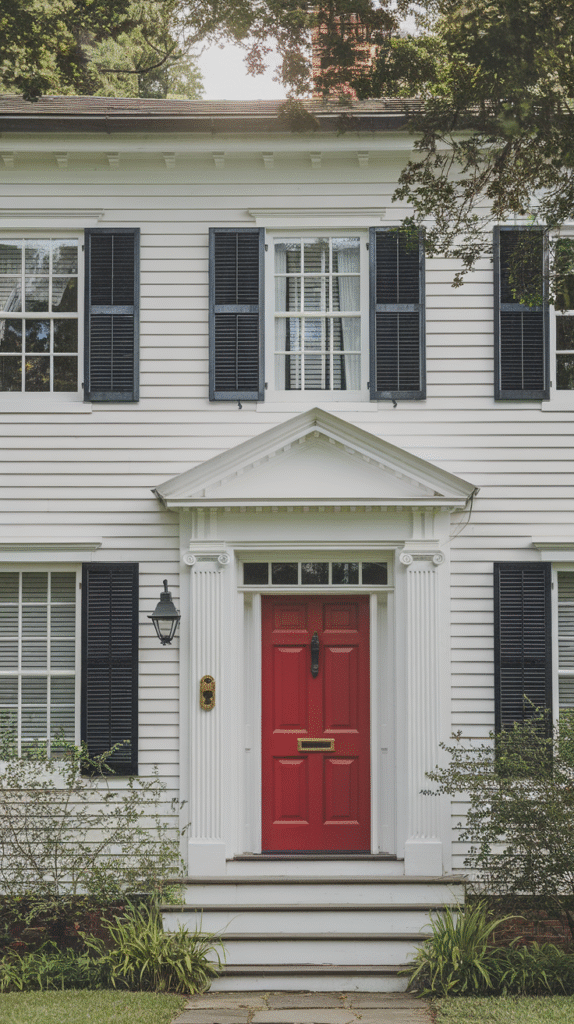
Proper exterior lighting can make your Colonial look like a scene out of a Nancy Meyers movie. Think lantern-style sconces flanking the front door or a hanging pendant under a portico. Go for oil-rubbed bronze or antique brass finishes—they bring warmth and subtlety without feeling too flashy.
7. Add a Portico or Covered Entry
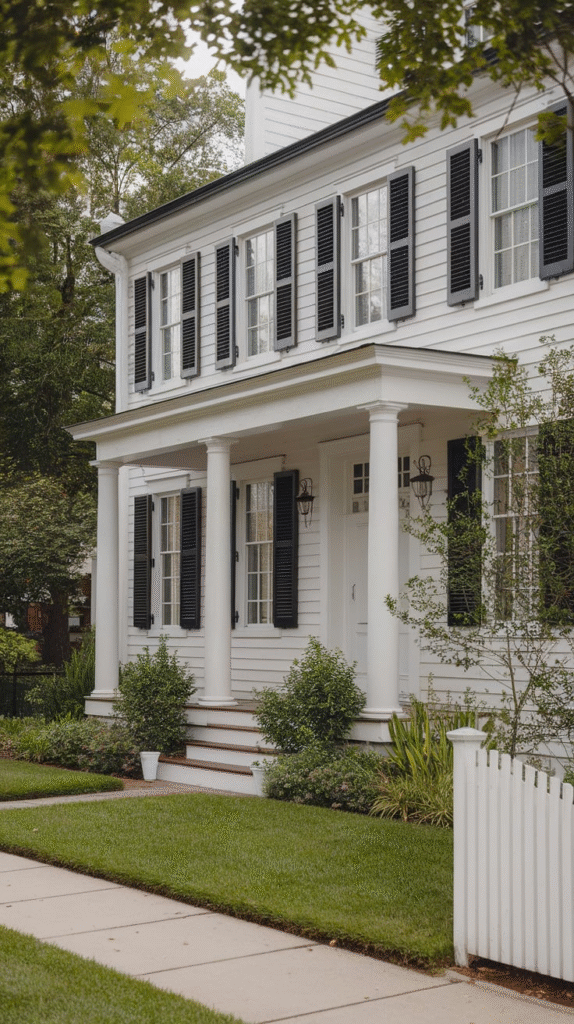
If your Colonial doesn’t already have one, a portico is a game-changer. It provides shelter, enhances the entrance, and creates an immediate sense of formality. Use columns, pediments, and crown molding to echo the era. A neighbor added one to their modest Colonial and suddenly, their whole home felt grander and more complete.
8. Highlight the Symmetry
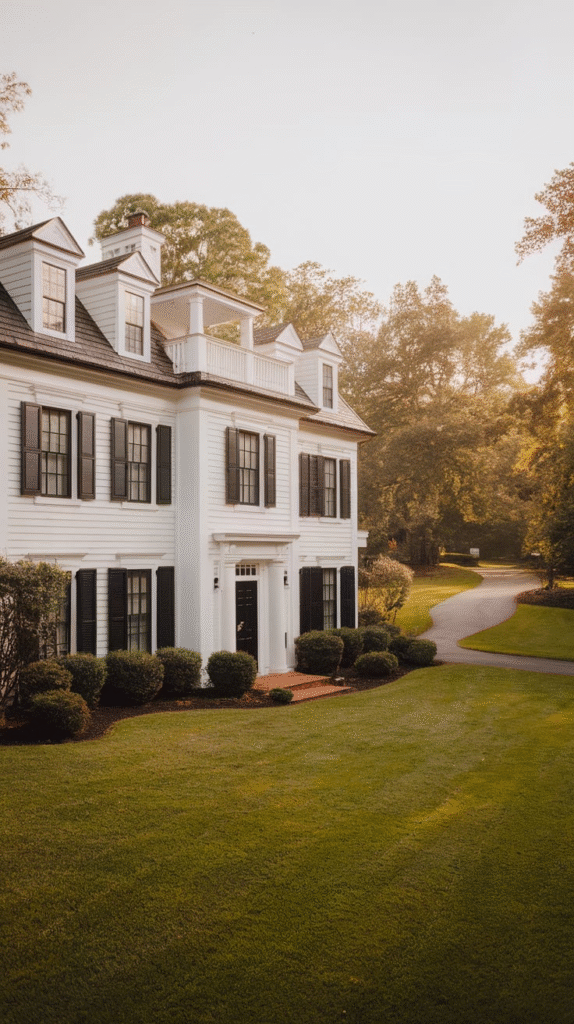
Colonials thrive on symmetry. Make sure your windows, shutters, lights, and landscaping are all in harmonious alignment. It’s like playing classical music—each element has a part in the larger composition. Even minor asymmetry can throw off the look, so measure twice, install once.
9. Add Window Boxes for Seasonal Charm
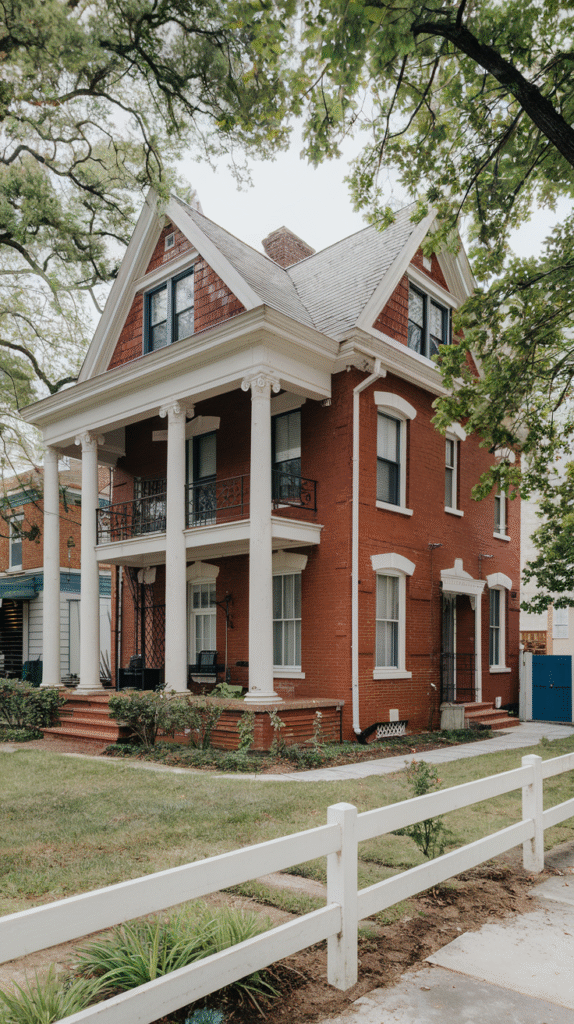
A row of window boxes filled with cascading ivy or blooming petunias adds softness and color to an otherwise stoic façade. It’s like putting lipstick on a scholar—unexpected but delightful. Stick with classic wooden boxes painted to match your shutters or trim.
10. Use Historical Paint Colors
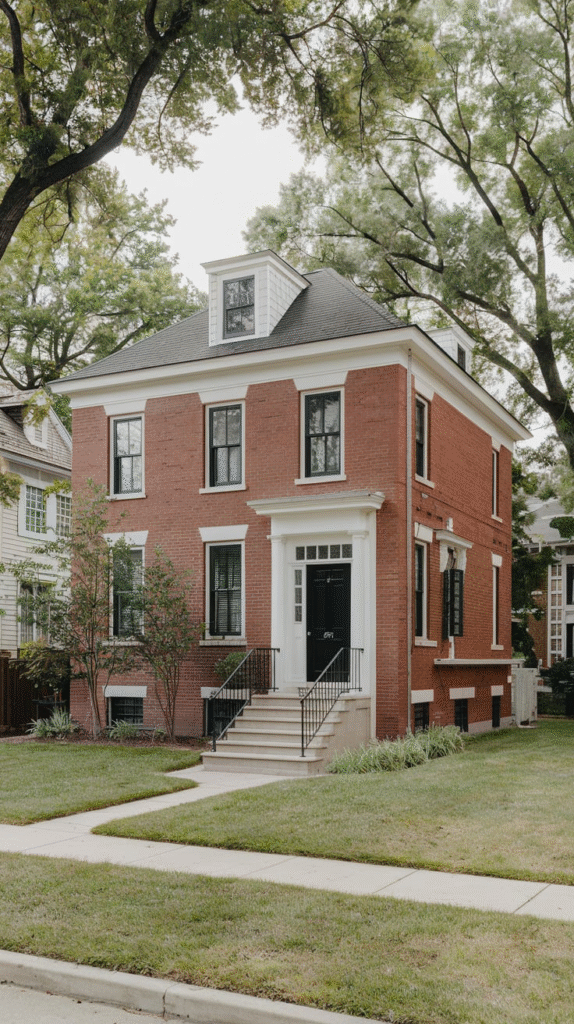
Nothing connects your Colonial to its roots like historically accurate paint colors. Benjamin Moore’s Historical Collection is a great place to start. Look for Williamsburg Blue, Butterfield Gray, or Carriage Red to keep your palette both authentic and stunning.
11. Add a Cupola or Weathervane

For those who love a little flair, consider a cupola or a weathervane atop your garage or main house. It’s a subtle nod to tradition, and it adds a vertical line that draws the eye upward. Just don’t go overboard—you’re enhancing history, not writing a fantasy novel.
12. Upgrade the Front Door Hardware
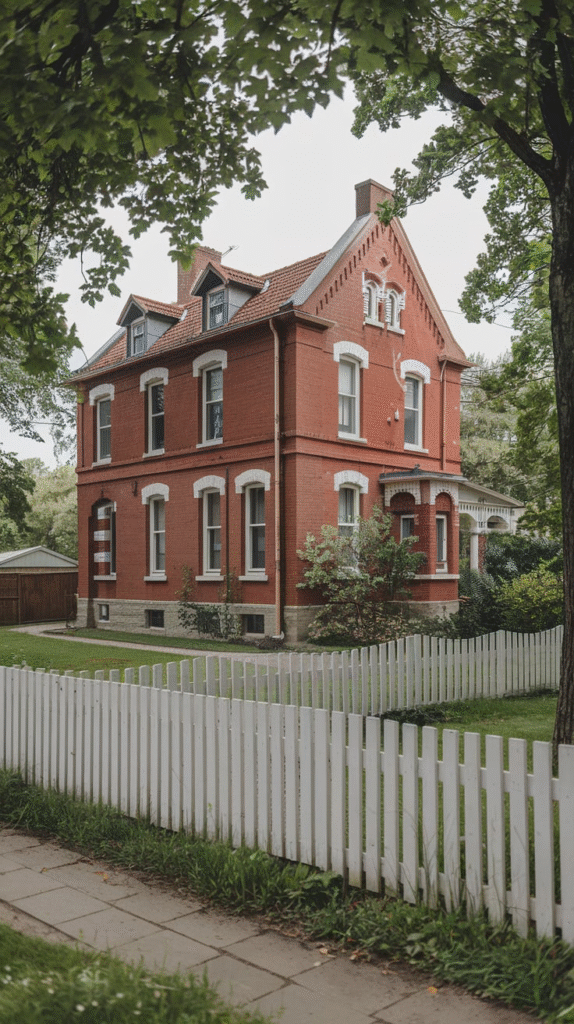
Replacing old or generic hardware with solid brass knobs, knockers, and escutcheons can make a world of difference. These elements may be small, but they’re like cufflinks on a dress shirt—refined, purposeful, and quietly sophisticated.
13. Add Dentil Molding and Cornices
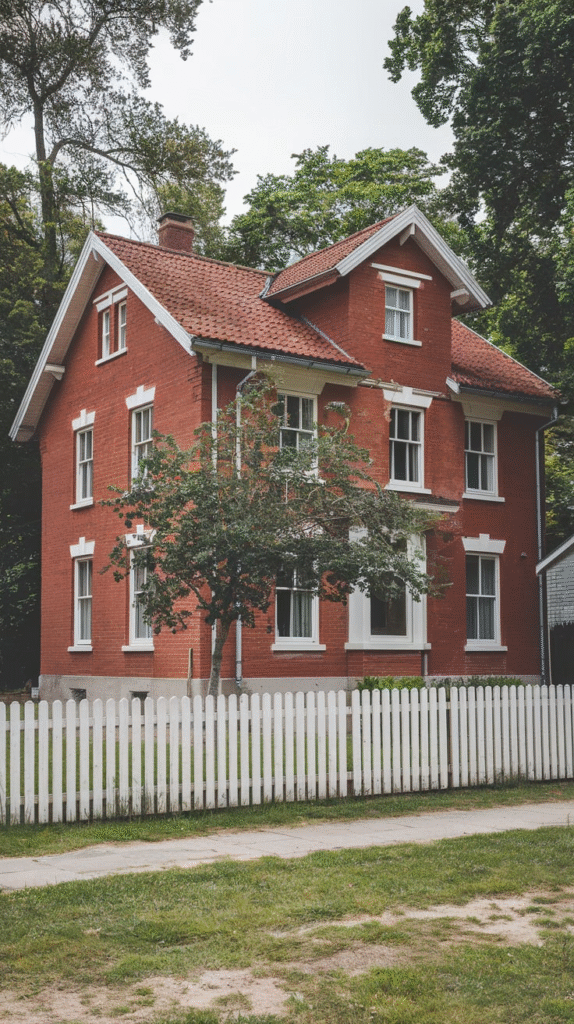
Colonial architecture is often adorned with dentil molding, that little row of teeth-like trim under the eaves. It’s one of those things people don’t always notice, but they feel the difference. It adds depth and historical character, especially when paired with wide cornices or gables.
14. Paint or Stain the Front Porch

Whether you have a small stoop or a full-length porch, treat it like the stage it is. A dark-stained wooden floor or freshly painted white decking creates contrast and crispness. Pair it with a wicker bench or rocking chairs to add usability and visual appeal.
15. Install Traditional House Numbers and Mailbox
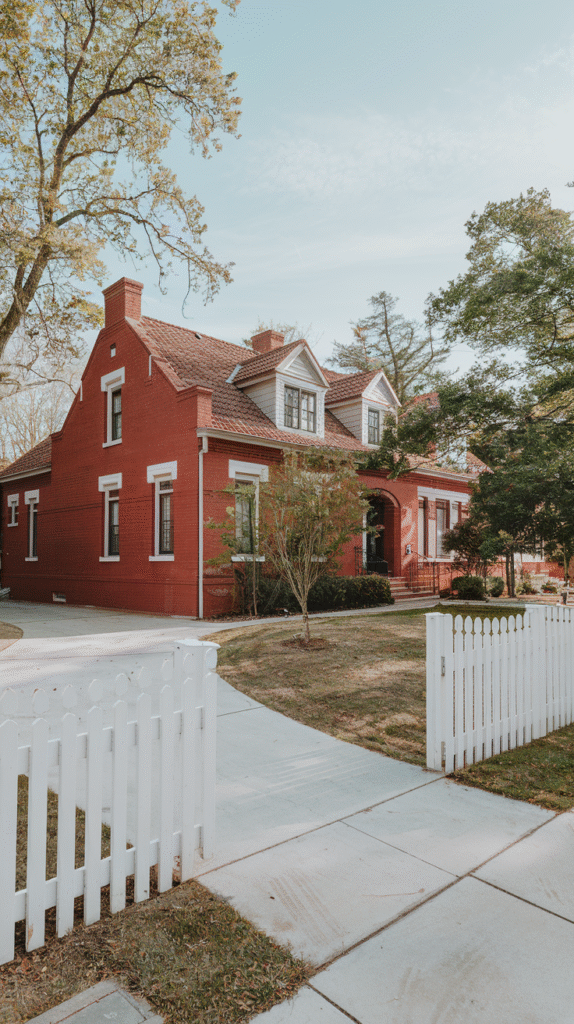
Swap out modern house numbers for metal or engraved wooden plaques in a serif typeface. It’s a subtle upgrade but speaks volumes about your attention to detail. Pair it with a wall-mounted brass mailbox for even more old-school charm.
16. Frame Your Yard with Symmetrical Landscaping
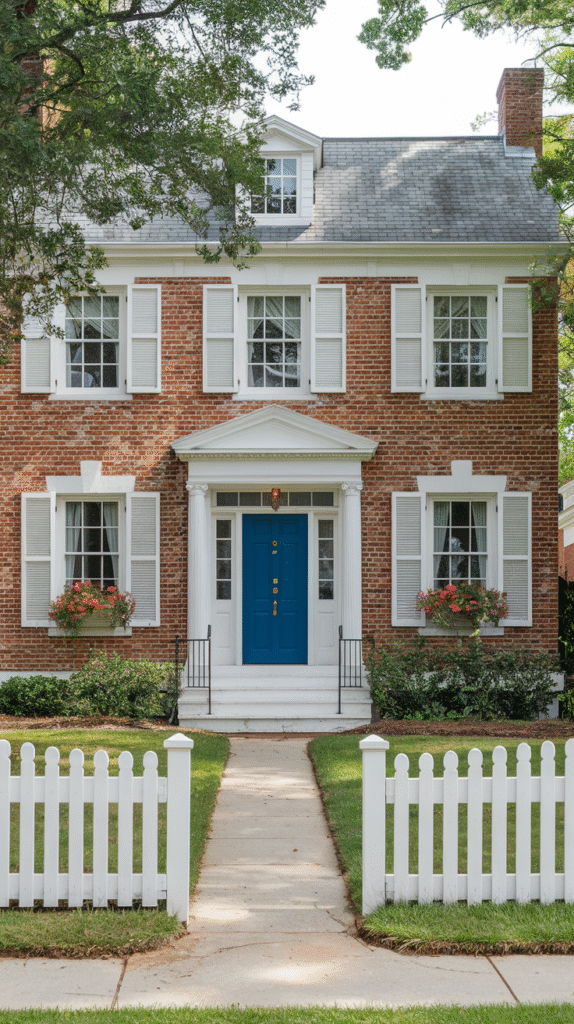
Colonials and topiaries go together like peanut butter and jelly. Think symmetrical boxwoods, layered hedges, or rose bushes flanking your walkway. Even a couple of matching urn planters on either side of the entry can make a huge difference in curb appeal.
17. Refresh the Roof with Traditional Materials
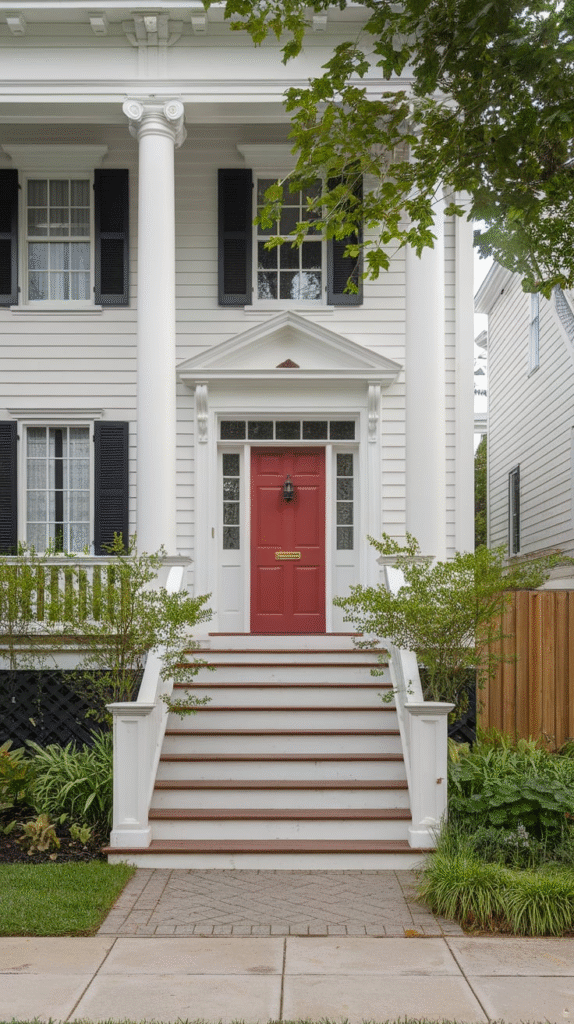
If your roof is due for an update, consider wooden shingles, slate tiles, or architectural asphalt in slate gray or charcoal. These options marry historical accuracy with modern durability. A well-matched roof is the cherry on top of a Colonial sundae.
18. Add a Side Porch or Veranda

Colonials are usually front-facing, but a side porch or back veranda adds livability without disrupting the visual symmetry. Think white columns, tongue-and-groove ceilings, and painted floors. I visited a friend’s home with one of these additions, and sipping iced tea out there felt like being on the set of a period drama.
19. Use Proper Trim and Molding Around Windows

Thick, wide trim around windows and doors adds a tailored look that keeps your Colonial crisp. Paint it in contrasting white or cream to highlight the geometry. This framing device makes the home feel grounded and sophisticated—like putting your face in a beautiful picture frame.
20. Consider a Two-Tone Palette for Subtle Depth

While Colonials usually lean toward uniformity, a two-tone paint scheme—like a darker base with slightly lighter trim—adds subtle drama. Think charcoal with dove gray trim, or forest green with antique white. It’s bold but still rooted in tradition, like a history professor in a stylish blazer.
Conclusion
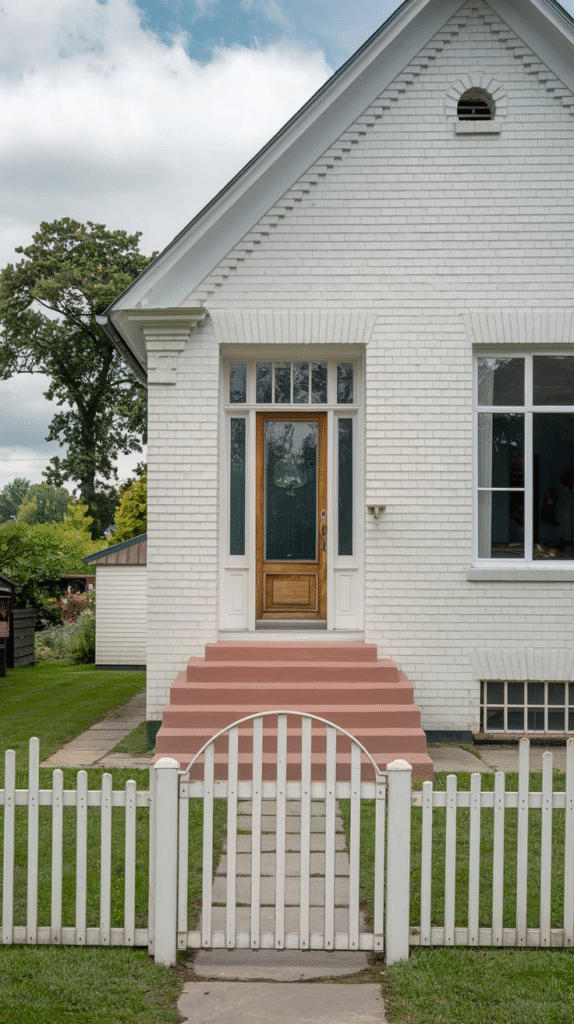
Colonial homes aren’t just architectural styles; they’re stories made of brick, wood, and dreams. And just like any good story, they benefit from a little editing and some thoughtful illustrations. Whether you’re leaning into the traditional or gently updating it with modern touches, remember the goal is timeless charm, not trendy flash.
Treat your home like the heirloom it is. Invest in details, lean into symmetry, and always respect its original voice. You’re not just refreshing a house—you’re curating a legacy.

